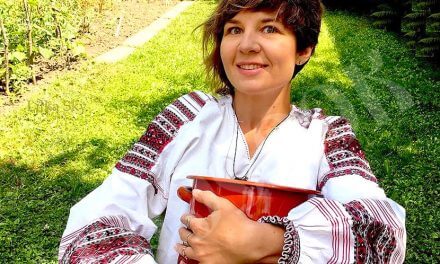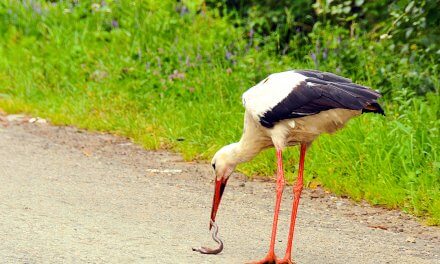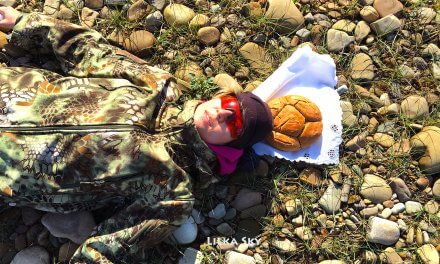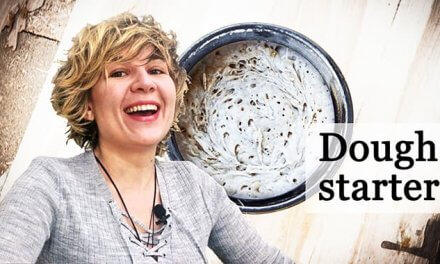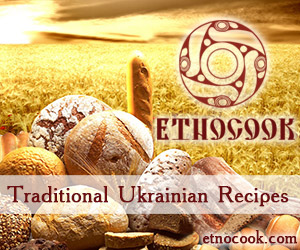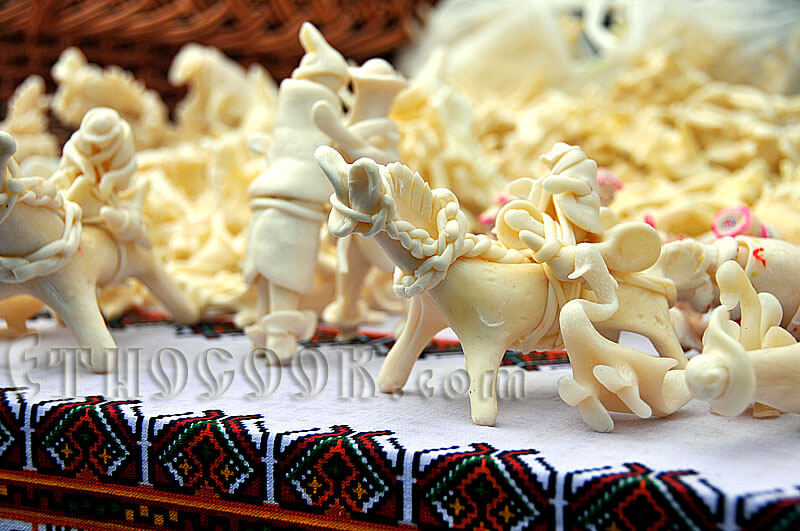 Cheese modelling is insufficiently explored type of folk art though in Hutzul Land (Ukraine). The traditions of sculptural modelling of cheese root ancient times.
Cheese modelling is insufficiently explored type of folk art though in Hutzul Land (Ukraine). The traditions of sculptural modelling of cheese root ancient times. 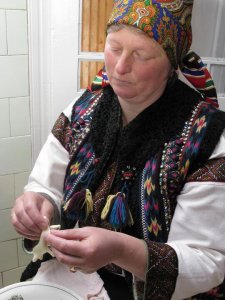 The cheese modelling is associated with sheep grazing on the meadow. There shepherds made first sculptures as amulets and ritual figures. The oldest sculptures are from XIX century because the material was not strong. Cheese processing technology is well known. In a bucket of warm milk is added spoon of hleh (leaven made from stomachs of dairy calves) and put in milk to turn sour. When milk properly turns sour it is able to make cheese from it that is material to model sculptures. To check how cheese turns sour it is put into hot water. If it is liquid and viscous at the same time then it is ready and it is good to eat and can be kept for a long time. When the master begins to work he cuts the cheese into pieces and
The cheese modelling is associated with sheep grazing on the meadow. There shepherds made first sculptures as amulets and ritual figures. The oldest sculptures are from XIX century because the material was not strong. Cheese processing technology is well known. In a bucket of warm milk is added spoon of hleh (leaven made from stomachs of dairy calves) and put in milk to turn sour. When milk properly turns sour it is able to make cheese from it that is material to model sculptures. To check how cheese turns sour it is put into hot water. If it is liquid and viscous at the same time then it is ready and it is good to eat and can be kept for a long time. When the master begins to work he cuts the cheese into pieces and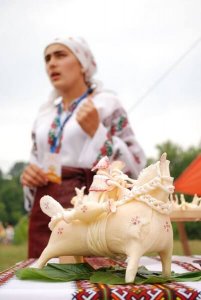 puts them into the hot water. Kneading in the hands of mass he forms a lump from which with rapid movements makes sculpture. The process resembles the formation modelling by stretching out certain parts of figures, heads and limbs etc. The sculpture is made from one whole piece of cheese. When the sculpture is done it is put into the salt water, where its shape is fixed. Now almost ready work is back into the hands of the master for the final stage of work – to saddle or to supplement the horse with harness. For this a long thread is drawn out from the piece of cheese which is with fast movements wreathed around the sculpture. The thread is fixed by a simple knot and the sculpture is put into the salt solid again. The more the water is saturated the longer the sculpture will be kept.
puts them into the hot water. Kneading in the hands of mass he forms a lump from which with rapid movements makes sculpture. The process resembles the formation modelling by stretching out certain parts of figures, heads and limbs etc. The sculpture is made from one whole piece of cheese. When the sculpture is done it is put into the salt water, where its shape is fixed. Now almost ready work is back into the hands of the master for the final stage of work – to saddle or to supplement the horse with harness. For this a long thread is drawn out from the piece of cheese which is with fast movements wreathed around the sculpture. The thread is fixed by a simple knot and the sculpture is put into the salt solid again. The more the water is saturated the longer the sculpture will be kept.
Modelling of cheese


